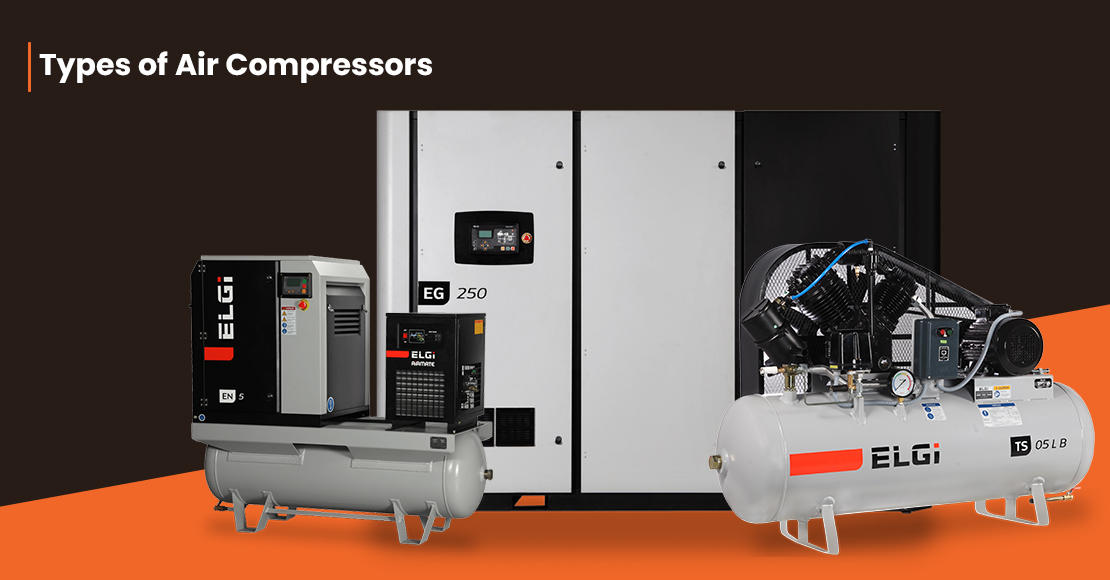Types of Air Compressors
When selecting an air compressor, it's essential to consider the specific requirements of your application. The following are the most common types of air compressors, each tailored to meet different needs:
1. Oil-Free Rotary Screw Air Compressors
Oil-Free Rotary Screw Compressors are designed to compress air without the use of oil for lubrication. This is particularly important in industries where the air must remain uncontaminated, such as in the food and beverage, medical, pharmaceutical, and electronics industries.
How They Work:
Oil-free rotary screw compressors use two interlocking screws to compress the air. In this type of compressor, the screws mesh together without the need for oil lubrication between them. The absence of oil ensures that the compressed air remains clean and free from contaminants, making it ideal for sensitive applications where even trace amounts of oil can be problematic.
Advantages:
Clean Air : These compressors provide clean, dry, and contaminant-free air, making them suitable for environments that require purity, such as hospitals or food production facilities.
Maintenance : These compressors require less maintenance than oil-lubricated compressors, as there are no oil changes to worry about.
Energy Efficiency : Although oil-free compressors are more expensive initially, they can be more energy-efficient in the long run.
Applications :
- Medical and Pharmaceutical Manufacturing
- Food Processing and Packaging
- Electronics Manufacturing
- Laboratory Equipment
2. Oil-Lubricated Rotary Screw Air Compressors
Oil-Lubricated Rotary Screw Air Compressors use oil to lubricate the internal moving parts, such as the screws, during the compression process. The oil helps reduce friction, ensuring smooth operation and cooling of the system. These compressors are ideal for applications that require continuous and reliable airflow.
How They Work :
In oil-lubricated rotary screw compressors, two interlocking screws rotate within a chamber, drawing in and compressing air. The oil is injected into the chamber to lubricate the moving parts, preventing wear and tear. The oil also aids in cooling the air and separating contaminants before the air is released for use.
Advantages:
Reliability : These compressors are designed for continuous operation, making them ideal for industries with heavy-duty air demands.
Cost-Effective : Oil-lubricated rotary screw compressors are generally more affordable and require less initial investment compared to oil-free compressors.
High Efficiency: These compressors offer energy efficiency for continuous industrial operations.
Applications:
- Industrial Manufacturing (e.g., automotive, metalworking)
- Construction Sites (operating pneumatic tools)
- Power Generation Facilities
- Non-sensitive Food Packaging
3. Reciprocating Air Compressors (2HP to 40HP)
Reciprocating Air Compressors are positive displacement compressors that use a piston-driven mechanism to compress air. These compressors are available in a wide range of sizes, from small models (2HP) to larger models (40HP), making them versatile for different applications.
How They Work:
In reciprocating compressors, a piston moves back and forth inside a cylinder. As the piston moves downward, it creates a vacuum that draws in air through the intake valve. When the piston moves upward, it compresses the air and forces it into the storage tank. The process continues in cycles until the tank reaches the desired pressure level.
Advantages:
Flexibility : Available in various horsepower models (2HP to 40HP), making them suitable for both small-scale and medium-scale applications.
Cost-Effective for Smaller Operations : These compressors are more affordable upfront, which makes them an excellent option for businesses with intermittent or lower air demands.
Simple Maintenance : Reciprocating compressors are straightforward to maintain, making them ideal for shops or locations where ease of serviceability is essential.
Applications:
- Automotive Industry (garage use, tire inflation, and light tools)
- Workshops and Small Factories (operating hand tools, spray guns)
- Agriculture (for powering irrigation and cleaning systems)
- DIY and Hobbyists (for inflating tires, powering air tools)
